Once the NBA trade deadline passes, the league’s buyout season unofficially begins. What exactly are buyouts, and how do they work? Today’s Hoops Rumors glossary entry will examine those questions. Let’s dive in…
While the term “buyout” is often applied colloquially when any veteran is released after the trade deadline, it applies specifically to a player who gives up a portion of his salary to accommodate his release. Rather than waiving a player outright, a team will negotiate the terms of the player’s release. Then, once the player clears waivers, his guaranteed salary with his previous team will be reduced or eliminated altogether.
The most common form of buyout involves a veteran player on a non-contending team being granted his release during the final year of his contract to join a playoff club down the stretch.
It typically happens after the trade deadline because by that point there’s no other way for a player to change teams. It’s even more frequent if the player was traded at the deadline for salary-matching purposes to a team that doesn’t view him as part of its plans.
Dragic and Thompson each fit this bill. The Spurs and Pacers probably aren’t going to make the playoffs this season and are more focused on developing their young players. Buyouts for those two veterans will give them a chance to join teams with loftier short-term aspirations.
For the player, the motivating factor is generally the desire to play for a winning team rather than a chance to earn more money. In their buyouts, Dragic and Thompson gave up roughly the amount of money they’ll make on new prorated minimum-salary contracts, so they likely won’t come out ahead financially — they’ll just get a chance to play in the postseason before returning to free agency in the summer.
As for the team, there’s little downside to letting a veteran go, since the player is usually in the final year of his contract and the club completing the buyout is rarely in contention for a playoff spot. Buying out that veteran can save the team some money, earn some goodwill with a player and an agent, and open up minutes for a younger player to take over.
What happens if a team and player reach a buyout agreement, then the player is claimed off waivers?
Waiver claims are rare in the NBA, particularly for players earning more than the minimum salary. If a team doesn’t have the cap room available to fit a waived player’s salary, that team needs a trade exception or disabled player exception big enough to accommodate that player’s salary. Otherwise, it can’t place a claim.
Those rules made it impossible this week for most NBA teams to claim a player like Dragic, who had a cap hit of $19.44MM before being waived. The only teams with the ability to claim him were the Thunder, who have over $31MM in cap room, and the Trail Blazers, who have a $20MM+ trade exception. Neither of those teams jumped at the opportunity to sacrifice valuable flexibility in order to claim a 35-year-old point guard on an expiring deal.
Although Dragic agreed to give up about $820K as part of his buyout with the Spurs, that amount isn’t removed from his cap charge until after he clears waivers, so any team wanting to claim him needed to be able to accommodate his original $19.44MM salary (not that adjusting that number to $18.62MM would have changed the equation for any teams anyway).
The rarity of NBA waiver claims is the reason why a player who receives a buyout often reaches an agreement with a new team even before he has cleared waivers. The odds of a waiver claim are so low that it usually doesn’t make sense for a player to wait until he’s officially a free agent to start negotiating.
The team completing the buyout almost always gives the player’s agent the go-ahead to open those talks with potential suitors. It’s a win-win, since a player who knows he has a landing spot lined up is more likely to give back a little extra money to his old team. Thompson reportedly reached a deal with the Bulls before being officially waived by the Pacers.
In the very unlikely event that a bought-out player is claimed on waivers, the buyout agreement between him and his previous team is no longer necessary — since his new team is taking on his original contract, his old team will no longer owe him a single cent or carry his old cap hit. That’s essentially the most efficient possible form of buyout for the player’s old team.
How do the cap hits work when a team and player agree to a buyout?
The equation for a player in the final year of his contract is pretty simple — the amount he agrees to give up in the buyout is simply subtracted from his overall cap hit. Dragic, for instance, reportedly agreed to surrender $819,835 from his $19.44MM salary, reduced his cap charge for the Spurs from $19,440,000 to $18,620,165.
For a player who isn’t in the final year of his contract, the calculations are a little more complicated, and depend on when exactly the buyout is completed.
For instance, Kemba Walker agreed to a buyout with the Thunder during the summer of 2021. At the time, he had $73,669,500 in guaranteed money left on his contract – $36,016,200 for 2021/22 and a player option of $37,653,300 for 2022/23.
Walker agreed to give up exactly $20MM, which worked out to about 27.1% of his overall guarantee. That meant reducing each season’s cap hit by 27.1%, which left Oklahoma City with charges of $26,238,422 for this season and $27,431,078 for next year.
That 27.1% reduction was applied evenly across two seasons in Walker’s case because he hadn’t been paid any of his salary for the coming season. In cases where a player is bought out later in the league year, the formula is weighted less heavily toward the current league year.
During the 2020/21 campaign, for example, Blake Griffin agreed to a buyout with the Pistons in March, a little over halfway through the season. At the time, he had a cap hit of $36,810,996 for ’20/21, with a $38,957,028 player option for 2021/22. Griffin gave up $13,333,333 as part of his buyout, resulting in respective cap charges of $32,670,565 and $29,764,126 — a higher percentage of the buyout money was applied to year two, since year one was already more than halfway over.
Is there a deadline for buyouts to get done?
There’s technically no deadline, but March 1 is the date to watch. Players bought out and/or waived after that date aren’t eligible to play in the postseason for a new team.
That March 1 cut-off can cause some confusion — a player doesn’t necessarily have to be signed to his new team by then in order to be playoff-eligible. He just has to be released by then.
For instance, a player who is waived by one team on February 25 and then signs with a different team on April 10 would be postseason-eligible for his new club. A player who is waived on March 4 and signs on April 10 would not be.
A player who has been out of the NBA all season (Marc Gasol, for example) would be playoff-eligible if he were to sign with a team in March or April.
Are there restrictions for where a player who receives a buyout can sign?
If a player agrees to reduce his guaranteed salary as part of his buyout, he can’t re-sign with the team that waived him for a full year, or until his contract would have ended, whichever is later.
A player who is bought out or waived after being traded can’t re-sign with the team that traded him away until the one-year anniversary of the deal, or until the July 1 after his contract ends, whichever comes first. There’s one exception to this rule — if a player is traded twice during the same league year and then is bought out or waived, he can return to the first team that traded him.
For example, since the Heat signed-and-traded Dragic to Toronto in August, then the Raptors flipped him to the Spurs before he was waived, Miami would be eligible to re-sign the point guard, but Toronto wouldn’t.
Note: This is a Hoops Rumors Glossary entry. Our glossary posts will explain specific rules relating to trades, free agency, or other aspects of the NBA’s Collective Bargaining Agreement. Information from Larry Coon’s Salary Cap FAQ and ESPN’s Bobby Marks was used in the creation of this post.
Earlier version of this post were published in 2018 and 2020.
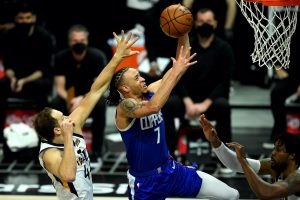
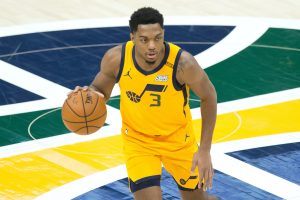
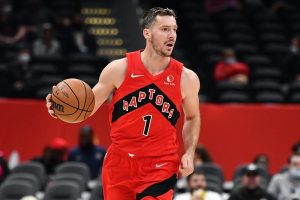 So far this season, we’ve seen Spurs guard
So far this season, we’ve seen Spurs guard 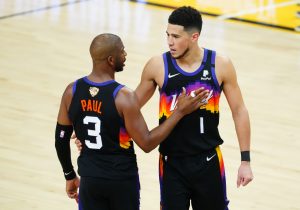 While the East has been the conference of parity this season, the Western Conference has been something quite different. Two teams, the Suns (48-10) and Warriors (42-17), have controlled the top of the standings for essentially the entire season — no other club has cracked the top two since November 10.
While the East has been the conference of parity this season, the Western Conference has been something quite different. Two teams, the Suns (48-10) and Warriors (42-17), have controlled the top of the standings for essentially the entire season — no other club has cracked the top two since November 10.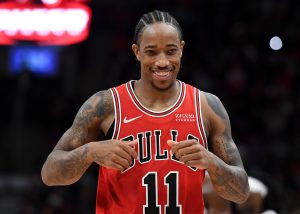 No team has been able to pull away from the pack in the East so far, with the 38-21 Bulls currently hanging onto the No. 1 seed by a half-game. If the season were to end today, Chicago’s .644 winning percentage would be the lowest mark for a conference’s top seed since Detroit went 50-32 (.610) in 2002/03.
No team has been able to pull away from the pack in the East so far, with the 38-21 Bulls currently hanging onto the No. 1 seed by a half-game. If the season were to end today, Chicago’s .644 winning percentage would be the lowest mark for a conference’s top seed since Detroit went 50-32 (.610) in 2002/03.